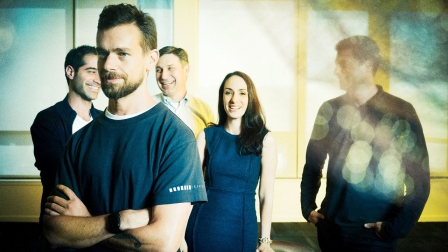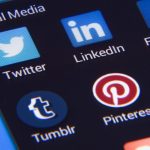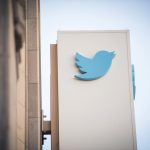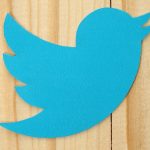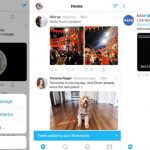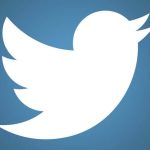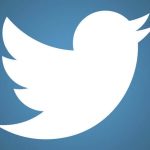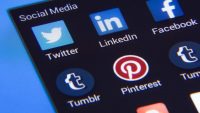Game Time For Twitter: Jack Dorsey’s Big Bet On Live Events
Once upon a time, there was an ocean that surged with a billion and one stories. Every one was different, and they combined in unexpected ways to create new stories. Fishing one out of the torrent took patience, but could be enormously rewarding.
The ocean in question is the subject of Salman Rushdie’s 1990 fantasy novel, Haroun and the Sea of Stories, a book unfamiliar to me until Jack Dorsey spontaneously urged me to read it as we chatted in the Aviary, a secluded spot at Twitter’s expansive San Francisco headquarters. “I think you’d really like it,” said the company’s cofounder and CEO, smiling intriguingly. “It reminds me of Twitter.”
Once you read Rushdie’s fable about “a liquid tapestry of breathtaking complexity,” as I rushed to do, it’s obvious why Dorsey sees parallels between it and the service he helped launch in 2006. (Told of Dorsey’s affinity for his novel, Rushdie, who tweets prolifically about everything from politics to baseball for an audience of 1.2 million followers, says he’s “tickled” and is “happy to have been 16 years ahead of the game.”) In the book, the sea of stories is being poisoned by a bad guy who prefers silence to speech, and an intrepid lad must try to restore its splendor.
Dorsey’s task? He must rekindle the promise of Twitter’s first several years, when the company aspired to be the first billion-user internet service. Dorsey was famously fired as CEO in 2008, returned as executive chairman in 2011, and succeeded Dick Costolo as CEO last year. (He also launched the financial services company Square and is still its CEO.) Now his role is widely, and uncharitably, seen as a rescue mission for an endangered institution.
The company’s challenges are manifold. Since Twitter’s 2013 IPO, its stock price has halved. While Snapchat and Instagram have exploded in reach, Twitter has been unable to fix its intimidating learning curve that discourages new users. In its most recent quarter, it reported 313 million monthly active users, an uptick of only 3 million from the previous quarter. (Facebook, despite having more than five times as many users, added 60 million in the same period.) “Twitter is in this position where they’re going to continue to be compared to Facebook and they’re going to be unable to catch up,” says Danny Sullivan, founding editor of Marketing Land.
Revenue for the quarter and Twitter’s estimate for the next one fell short of analysts’ expectations. And the platform has been dogged by charges that it is a haven for hatemongers and other miscreants. That’s led some well-known users to flee and commentators to publish think pieces with apocalyptic titles like “The End of Twitter.”
Yet for all the eagerness to write Twitter’s obituary, it remains a central piece of our cultural infrastructure. It’s where Donald Trump drives the election news cycle, Shonda Rhimes takes TV viewers behind the scenes of her many series, and Bill Gates shares infographics about progress in tackling the planet’s most important problems. Even seemingly mundane tweets are fodder for news stories (“Ellie Goulding Writes Mysterious Tweet After Getting Back in the Studio”) in a way that happens far less often elsewhere, Facebook included.
Dorsey is pushing his company to turn that cultural relevance—a place where news is both conveyed and made on a moment-by-moment basis—into a growth engine. In late April, Twitter reclassified its iOS app on the App Store, moving it from social networking to the news category. This had the practical effect of vaulting the service out of Facebook’s shadow into a No. 1–in-its-group spot. But the move also signifies how Twitter is working to redefine itself.
What Dorsey wants is to reset the game—or, more precisely, to stake out an entirely new one. Comparisons with Facebook have followed Twitter from its earliest days, rarely to its advantage. The results of this new framing could leave Twitter looking less like a social network that can never match Facebook’s scale than like a new kind of media company.
Emphasizing news and commentary over networking, Twitter believes, dramatically broadens its appeal. In surveys, nonusers told the company that they “felt that in order to really use Twitter, they had to be tweeting every day,” says chief marketing officer Leslie Berland, whom Dorsey recruited from American Express earlier this year. While devotees saw Twitter as an essential way to stay up on the news, those who weren’t active thought it was primarily another way to share stuff with friends and family. “Many of them said to us, ‘You know, I don’t have anything to say,'” Berland explains. “They come in thinking we’re a social network.”
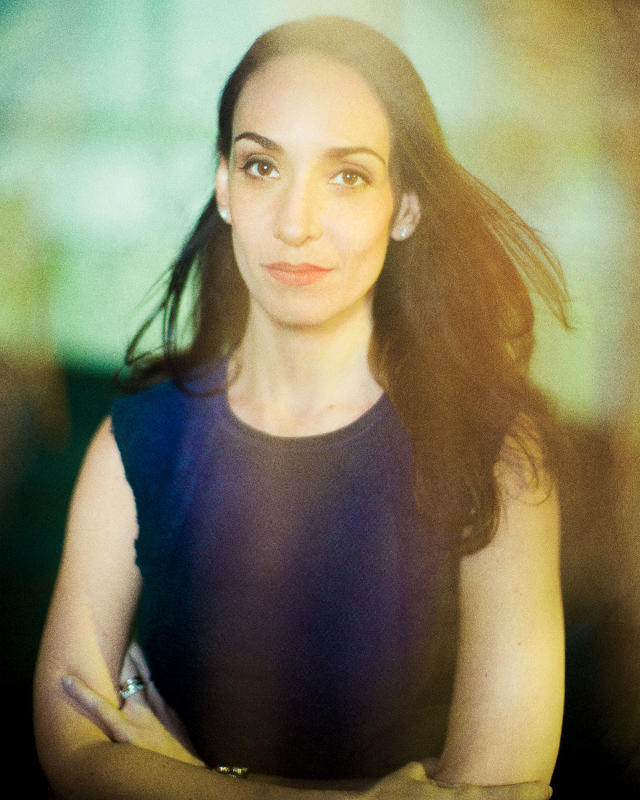
To fuel a shift in perception—among consumers, marketers, and investors—Dorsey, Berland, and COO Adam Bain are betting big on live video, exemplified by a high-profile investment in live-streaming NFL programming.
Dorsey likens choosing this focus—and de-emphasizing efforts that don’t contribute to it—to his own habits at the gym, where he prefers to pick one exercise and stick to it. “It’s been really emboldening, because now you can actually see it—it’s here, and now it’s here, and now it’s here, and now it’s here,” using his hand to mark off recent accomplishments on the edge of the table we’re sitting at. “And it’s getting better and better every single day.” Dressed in a white T-shirt and black jeans, the bearded 39-year-old is preternaturally calm and thoughtful. That’s his normal demeanor, but it’s particularly striking given that our discussion of Twitter’s strategy is taking place less than an hour before he hosts an analyst call to discuss the company’s disappointing results.
Inside Twitter, nobody is doing any victory dances just yet. Still, “I think a lot of us walk around knowing that we know a lot of the world doesn’t know about what’s coming,” says VP of global brand and creative strategy Joel Lunenfeld, as we grab lunch in a cafeteria/community space known as the Commons, underneath a just-installed art piece made out of sweeping strands of colorful fibers that remind me, at least, of both Twitter and Rushdie’s description of his sea of stories. “That gives us a lot of excitement.”
“Happy endings are much rarer in stories, and also in life, than most people think,” Rushdie cautions in his novel. “You could almost say they are the exceptions, not the rule.” It’s not surprising to reveal that the young protagonist in his story ultimately triumphs. Dorsey is writing Twitter’s next chapter right now—a kaleidoscopic quest featuring looming adversaries, bedeviling trolls, and artificial intelligence. And it all kicks off with football.
On April 5, NFL commissioner Roger Goodell announced, via his first tweet in 19 months, that Twitter had won the rights to stream 10 Thursday Night Football games for the upcoming season. The news shocked the sports-media world. Speculation about likely partners centered around Amazon, Apple, Facebook, Google, and Verizon. If Twitter wanted to make a bold statement about its streaming-video aspirations, it couldn’t have picked a better way to do it. “In traditional media, it’s a widely held view that the NFL created Fox Sports,” says John Ourand, media reporter for Sports Business Journal, citing how the then-fledgling Fox network used football rights to build a media empire. It’s also, Ourand adds, “a widely held view that the NFL created ESPN, [which] charges cable companies a ton more than any other channel. The fact it has [Monday Night Football] is a big reason.”
The NFL deal marks a new evolution in Twitter’s impulse toward live events, which goes back to its earliest days. Back then, the service was, as one 2007 article snarked, “full of news flashes about which variety of latte a friend just ordered at Starbucks.” But some members were already using it to follow and discuss current events, and even hear from newsmakers such as then–Democratic presidential candidate John Edwards, one of the first Twitter celebs. That same year, MTV used Twitter to enhance its Movie Awards and Video Music Awards shows by enlisting stars to tweet during the events.
As smartphones improved, Twitter looked beyond 140-character chunks of text, acquiring Vine, a not-yet-launched, Instagram-esque way to capture and share videos in 2012. Even though Vine videos were (until recently) only six seconds long, they’ve been widely used to share compelling imagery of newsy events such as the 2013 suicide attack on the U.S. Embassy in Turkey.
Periscope, a video-streaming platform that Twitter purchased in early 2015 (also shortly before it launched) is even more news-friendly, enabling users to broadcast high-quality live videos of any length from a smartphone in real time. It’s been increasingly integrated into the Twitter app, where live Periscope videos play inside tweets.
Twitter’s move toward live streaming actually predates Dorsey’s return. In late 2014, then-CEO Costolo asked Bain and CFO Anthony Noto to formulate a plan for investing in content. When the National Football League announced an auction for the right to stream a single 2015 game between the Buffalo Bills and Jacksonville Jaguars, Twitter was reportedly among the bidders.
The auction was won by Yahoo, which paid $17 million and then delivered a resounding flop: Although Yahoo claimed 33.6 million views, analysts calculated that only 2.36 million actually watched, making it the least-seen game in NFL history.
To those inside Twitter, the NFL’s one-game experiment confirmed the distinctive opportunity that they had. It was “the epiphany of ‘we can really own this,’” says Twitter’s Noto, who had been a star linebacker at West Point and the NFL’s finance chief from 2008 to 2010. “People are already talking about these games on Twitter,” he says. “They clearly are engaged in conversations with each other while they’re watching the game. How do we create an experience that leverages the great content conversations happening on Twitter with the actual content that they’re talking about?”
Dorsey says that Twitter can give partners such as the NFL something other tech companies can’t. “We’re doing the thing that people have been doing for close to 10 years, which is: They watch a screen, and they tweet about it,” he says, motioning toward an imaginary HDTV and then cradling a phantom smartphone in his hands. “We’re bringing that into the same screen, and, most important, we’re making that mobile, so you can watch it anywhere.”
“We really ended up with Twitter because we thought it gave us a great opportunity for incremental audience reach and mobile reach,” says Brian Rolapp, executive VP of media for the NFL, which awarded these games to Twitter even though it wasn’t the highest bidder. “We have data that says 7 of 10 of our fans have a second screen open [while watching games]. They’re texting, they’re playing fantasy, they’re on Twitter.” If superfans aren’t at home to watch a broadcast, the league would much prefer that they watch and cheer in the Twitter app than do something other than think about football.
That’s the Twitter deal’s short-term benefit to the league. But Ourand points out that it’s also thinking ahead to 2022, when its current big broadcast agreements are up for renewal. With more consumers cutting the cable cord and ESPN and Fox’s subscriber bases contracting as a result, the league is “trying to give these digital companies a taste of the power of NFL programming,” he says. “They’re hoping they’ll become addicted to it and come back.”
Twitter won’t confirm what it paid for its NFL rights, but it reportedly ended up plunking down between $10 million and $15 million to stream 10 Thursday night games during the 2016 season. That’s less than what Yahoo paid for a single game and a pittance compared to the $45 million per game that CBS and NBC are paying to air the same slate of Thursday night games. Twitter isn’t the exclusive outlet for the content, but the exclusive experience it’s offering has found some quick traction. Long before its first live stream—Jets versus Bills on September 15—top-tier marketers including Anheuser-Busch, Ford, Nestlé, Sony Pictures, and Verizon had signed on as sponsors.
Twitter warmed up for the NFL season this past summer by streaming events such as Wimbledon and the Republican and Democratic conventions. In early August, I caught its coverage of the red-carpet premiere of Warner Brothers’ Suicide Squad, hosted by a couple of bespectacled BuzzFeed reporters hyperventilating with anticipation over the comic-book supervillain team-up and its stars. Below the video window, a feed of tweets from everyday Twitter users alternately shared the BuzzFeed guys’ excitement and mocked their exuberant nerdiness. Twitter used real estate in users’ feeds to deliver an audience to the stream, and a tweet from Jared Leto (who plays the Joker in the film) helped the premiere become a top trending topic on the entire service. The whole thing was a goofy, good-natured dry run for more meaningful streams to come, and it showcases Twitter’s unique power to turn an event into a conversation.
Twitter’s streaming experience can be enjoyed without having to learn any of the platform’s typical arcana. You don’t need to figure out whom to follow, how to use hashtags, or what to tweet about. You can even partake if you’re not logged in or don’t have an account at all. In short, it’s Twitter on training wheels—perfect for potential users who are intimidated by the classic Twitter timeline.
If everything goes according to plan, Twitter’s live video streams could solve multiple problems for the company—by giving users, advertisers, and content partners reason to look at the service in a fresh way. “If you think about the 313 million people who use Twitter, there’s at least another 313 million like-minded people who just happen to not use Twitter because they either tried it and didn’t get it, or they tried it with the wrong intentions,” says Lunenfeld, who spent years helping brands market themselves on Twitter before shifting his focus to helping Twitter market itself.
To reintroduce Twitter to nonusers—and those who have given the service a try in the past but lost interest—CMO Berland launched a new branding campaign in late July. One digital ad shows an amalgam of imagery: Donald Trump and Hillary Clinton; Game of Thrones‘ Peter Dinklage; a Black Lives Matter march; Hamilton’s Lin-Manuel Miranda; the Cleveland Cavaliers; and an obsessive Pokémon Go player trampling over the hoods of several cars. It ends with a new, newsy tagline—”It’s What’s Happening”—and a flurry of bright colors meant to better evoke the service’s personality than its official shade of blue, Pantone 2382 C.
The ads do an uncommonly coherent job of explaining why the uninitiated would want to try Twitter, a feat that has often eluded the company in the past. “The goal of that campaign, and this is just a start, is to clearly define Twitter,” says Dorsey. “You may have come in here assuming you’re going to see baby pictures from your friends. What you’re going to see is what’s happening in sports and politics and the world around you.”
Other sports leagues took note of Twitter’s NFL deal and began envisioning their own contests streaming live on Twitter. Twitter suddenly had a roster of premium events to set itself apart from rivals, attract new users, and engage current ones. In a rapid-fire series of announcements in June and July, the company unveiled agreements to broadcast MLB and NHL games in their entirety, plus live highlights of English Premier League soccer and original programming produced by the NBA. It will also carry news programming from Bloomberg. For now, Noto says, the company is focusing on DVR-resistant live events rather than scripted programming such as sitcoms.
Twitter is hardly the only digital company targeting premium streaming video. Unlike Facebook and Snapchat, though, Twitter has a now decade-long track record working with traditional media companies, sports leagues, and brands. “We’re bidding against people with deeper pockets, but we’re still winning the deals,” says Ross Hoffman, VP of global media partners. “There are many instances where we’re the right partner.”
“Twitter has a unique ability to bridge digital media and TV,” says analyst Brian Wieser of Pivotal Research. The company “can legitimately compete for TV budgets. Not [digital] video budgets, but budgets that would go to premium television.”
The NFL-on-Twitter ad experience will be familiar in many respects, with commercial breaks right where they’d be on a network broadcast. That appeals to marketers who now expect their digital advertising to be seen by prospective customers and are no longer smitten with the novelty of retweets. “The idea of putting something out there and praying it goes viral is really past us,” says Greg Hahn, chief creative officer at advertising giant BBDO. “You have to be strategic. If [Twitter is] live-streaming Thursday Night Football, that guarantees you some eyeballs. If you can guarantee a specific audience at certain times, then that becomes the new prime time.”
Video has been integral to how Twitter makes money since 2013, when the company introduced an ad product called Amplify that lets marketers sponsor brief video clips. (The NFL, to cite one example, has been a significant Amplify client.) Today, the majority of Twitter’s revenue comes from video ads rather than text-oriented ones. “The response rate is higher for those video ads, and [users’] feeling for Twitter goes up as well,” says COO Bain, who was a leading candidate to become Twitter’s CEO before Dorsey made his comeback.
Unlike traditional network TV, Twitter can target users based on cues from their tweets. “If somebody is talking about being in the market for a car, we can help bring relevance there” by showing an automobile ad, says Bain. “If people are tweeting about going to the gym, there’s a whole set of athletic brands that want to be relevant in that moment.”
Twitter’s live video initiative, as significant as it may be, won’t displace the core experience of perusing tweets in a timeline anytime soon. And for many beginners, the service remains stubbornly impenetrable. Newcomers enticed by Twitter’s ad campaign could well lose interest before they understand what Twitter is trying to do for them.
Dorsey himself can sound like a critic carping from the sidelines when he assesses the current state of Twitter. “Right now, you have to do a lot of work up front to build a great timeline,” he says. “And then you have to do a lot of work to dig through it, to find the most meaningful stuff.”
Which doesn’t mean progress hasn’t been made. The effort to create a compelling live experience has refocused the company’s product-development efforts. As its streaming plans took shape, the service itself has become more intuitive and welcoming. In February, Twitter announced plans to finally start using algorithms to push the most relevant tweets to the top of users’ reverse-chronological timelines. (Change-phobic Twitter devotees flooded the service with the hashtag #RIPTwitter, though in the first couple of months, only 2% of users chose to switch the function off once it was implemented.) For the Rio Olympics, the company upgraded Moments—the Twitter-powered news section that debuted last October—by letting users follow a particular country, sport, or event, and have relevant tweets automatically pushed into their timelines.
Another major undertaking involves deploying artificial intelligence to help make sense of the hundreds of millions of tweets that get posted each day, along with photos and videos. For most of its history, Twitter was not exactly a hotbed of AI talent, but in mid-2014, the company acquired Madbits, a startup that built technologies to help sift through giant repositories of images. Its staff became the foundation of Cortex, the team of AI specialists inside Twitter whose goal is to smarten up every aspect of Twitter’s services.
Today, Cortex is being used to weave pieces of content together in brand-new ways. “In the case of a sporting event, there’s some expert commentary that you’re probably interested in, but you don’t want it to be only that,” says VP of engineering Jeremy Rishel. “If 100 people cheer, you want to know that, but you don’t want to read a hundred [versions] of the same tweet.”
One of the early beneficiaries of Cortex’s work can be seen in Periscope. Engineers created a feature called Highlights that automatically stitches together mini-trailers for every video. “They were born from a very simple realization that [our] average broadcast is seven minutes,” says Periscope cofounder and CEO Kayvon Beykpour. “If I have 20 broadcasts in my feed, am I really going to watch 140 minutes of video to catch up on what happened? Probably not.”
In June, Twitter paid a reported $150 million to acquire Magic Pony Technology, an excellently named London-based startup, and folded it into Cortex. Its algorithms, which Twitter plans to adopt for both Periscope and major-event video streams, analyze imagery to improve how a video looks, filling in detail that might otherwise get lost. “While you’re traveling home on the train, where you might have a spotty network, you can still see something with a look and feel that’s HD-like,” promises Dorsey.
Strategic use of AI could also play a role in helping Twitter address its most notorious, seemingly intractable problem: users who engage, often anonymously, in misogyny, racism, anti-Semitism, and other forms of hate speech. It’s not that the company has done nothing to foil them; it’s just that the trolls often seem to be a step ahead.
Recently, Dorsey says, “We’ve seen a trend—not just on Twitter, but on the internet more broadly, and in the world—of really targeted harassment and abuse.” In July, when Ghostbusters star Leslie Jones was the subject of such a campaign and announced she’d be leaving Twitter, Dorsey personally stepped in and, in a tweet, asked Jones to contact him. The ringleader, conservative blogger Milo Yiannopoulos, ended up being permanently banned from the service, and Jones returned.
As an open network that doesn’t enforce the use of real identities, Twitter can’t eliminate harassment altogether. Truthfully, Dorsey seems more interested in helping users shield themselves from abuse than wiping all offensive content off the platform. “We want to make sure that people feel safe to express themselves freely, and for us that means that we’re providing really crisp and clear tools so that people can report, and people can mute, and people can block,” he says. “But at the same time, if people want to, they can see everything.” In this spirit, the company recently introduced options that let users hide notifications for people they don’t follow as well as “lower quality” tweets.
“Twitter has made some progress with regards to safety, but has a long way to go,” says DeRay McKesson, the civil rights activist who has used Twitter to chronicle and organize protests seeking justice for unarmed African-Americans killed by police. McKesson, who befriended Dorsey when they both marched in Ferguson, Missouri, in 2014, has 536,000 followers but has manually blocked 19,000 other users. Ultimately, he says, Twitter’s value outweighs the hassle. “There are some days that are easier than others,” he allows, “and there are no easy answers.”
One day in mid-August, a bizarre rumor takes off on Twitter: The service itself is going to shut down in 2017. The company is compelled to issue a denial, and worried fans tag 100,000 mournful tweets #SaveTwitter. It’s hardly the first Twitter-borne death hoax. (Just ask Robert Redford, Paul McCartney, or Cher.) Still, the fact that it surfaced at all is evidence that many people perceive the company’s condition as fragile.
Even in a worst-case scenario, the threats to Twitter’s well-being are not remotely existential. The company has $3.6 billion in cash (and equivalents). It makes about $24 per U.S. user annually, and in its second quarter, it generated $175 million in earnings before interest, taxes, and depreciation, up 45% from a year earlier. That said, unless the company proves it can grow, its universe is destined to shrink. “I’m still bullish that there’s a need for a product that, when you pop it open, tells you what’s going on in your world,” says Josh Elman, who was an executive at Twitter from 2009 to 2011, and is now a venture capitalist. That service, he believes, is “a billion-user product. Will Twitter the company get its exact product to do that? That’s a good question. It’s harder to reignite momentum than it is to keep fanning the flames.”
Each time Twitter’s stock price drops, the notion resurfaces that some tech or media giant might snap it up at a lowball price. Google and Facebook, both of which once coveted the company, have probably long since moved on, but perhaps an old-school player such as AT&T could make a run at it. Another theory has the company going private: In early August, speculation centered on a rumor that former Microsoft CEO Steve Ballmer and Saudi Prince Alwaleed bin Talal, who together reportedly control close to 10% of Twitter stock, might team up to buy it outright.
In late August, Twitter’s stock got a bump when cofounder and board member Ev Williams said the company had to consider “the right options” about its future. And when the company held a board meeting on September 8, the items on the agenda reportedly included broaching the possibility of a sale, though no offers are on the table. But Twitter would still prefer to create a future for itself that inspires confidence on Wall Street, thereby driving its stock higher, warding off bargain hunters, and preserving its independence. That, ultimately, is what its new focus on news and live video is all about.
As Dorsey and I wrap up one of our conversations, I lob him a question about his long-range vision—the sort that most tech CEOs are only too happy to tackle. Maybe I shouldn’t be shocked when he throws it back in my face.
“I think the present is so much more interesting,” he says, politely but insistently. And for Twitter, it is. This company has so much at stake right now that the future isn’t some far-off destination. It’s what’s happening.
A version of this article appeared in the October 2016 issue of Fast Company magazine.
Fast Company , Read Full Story
(55)

